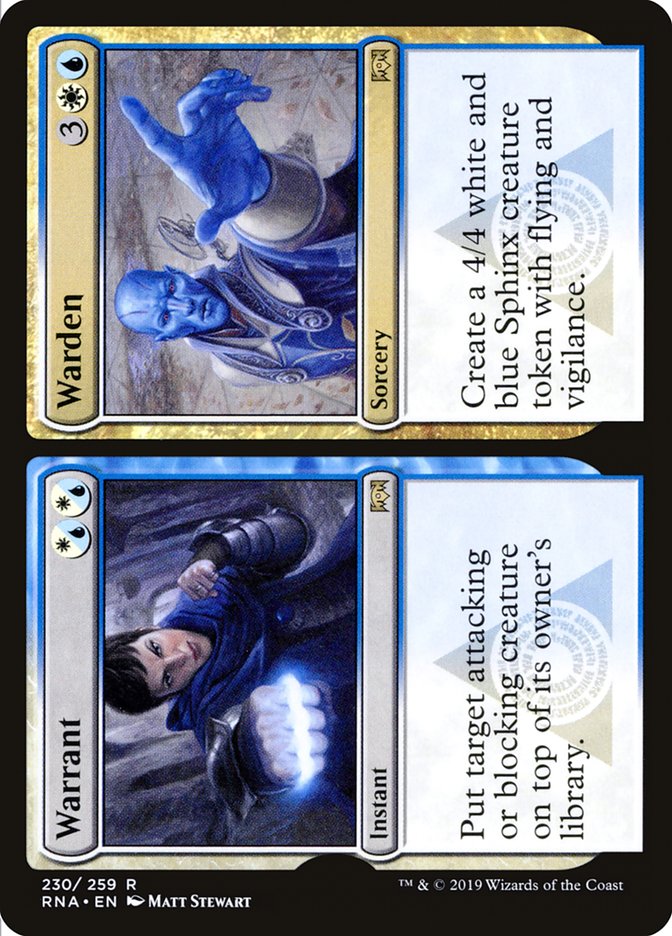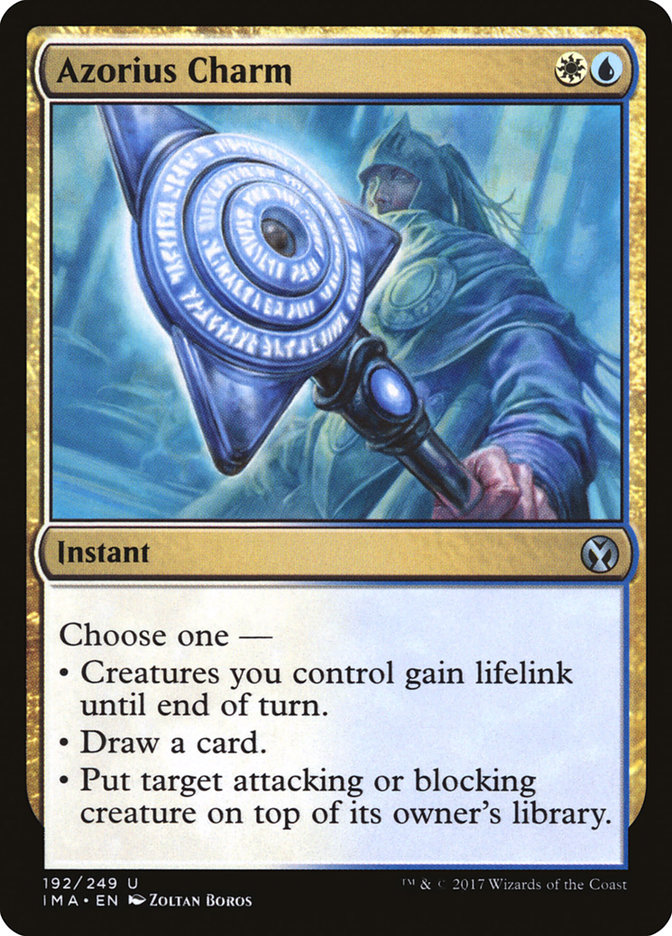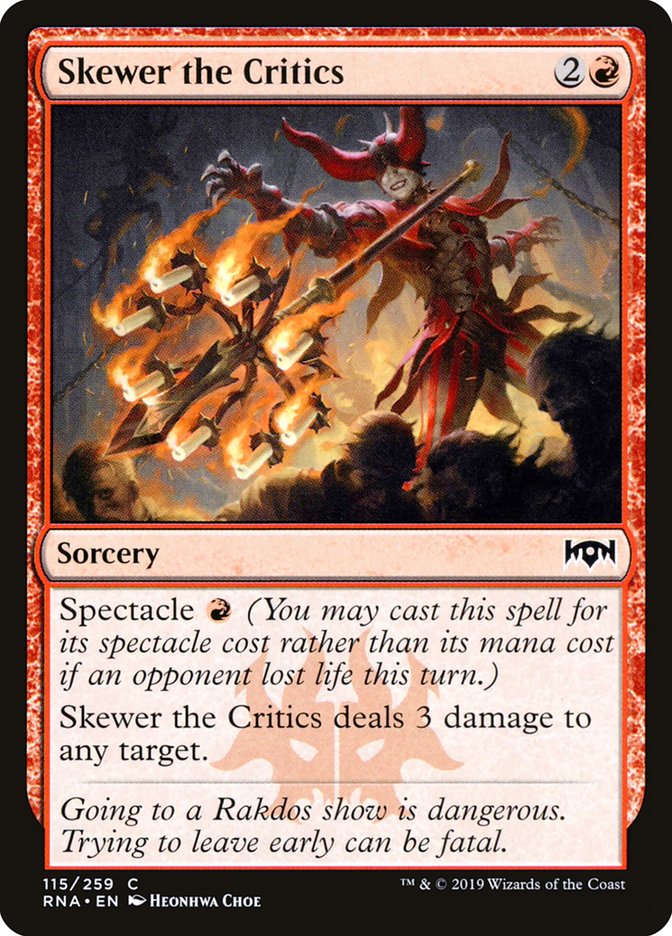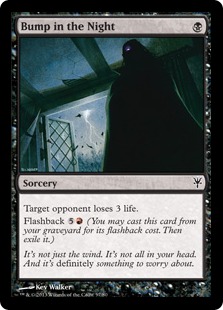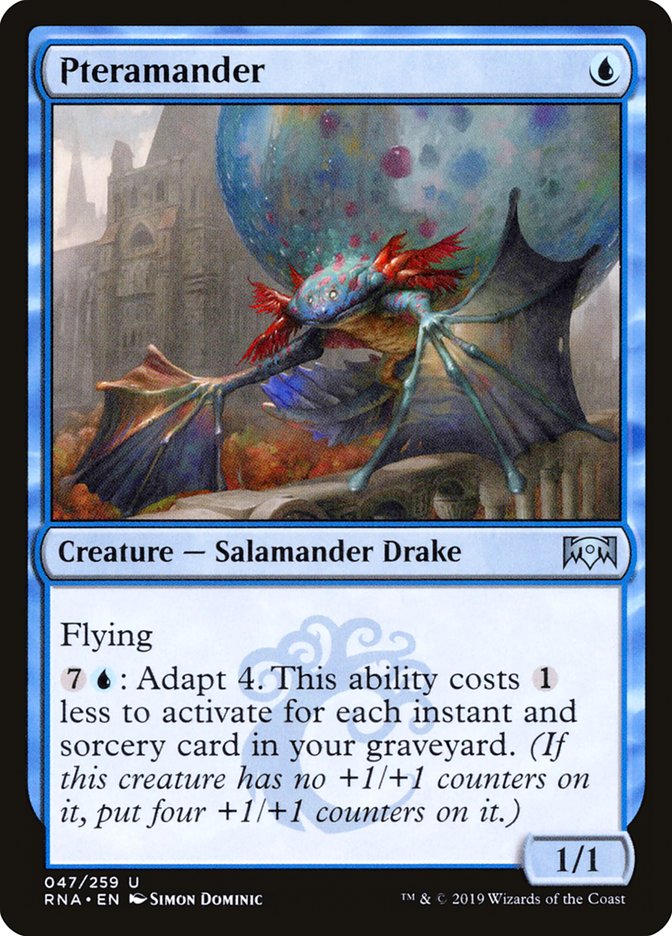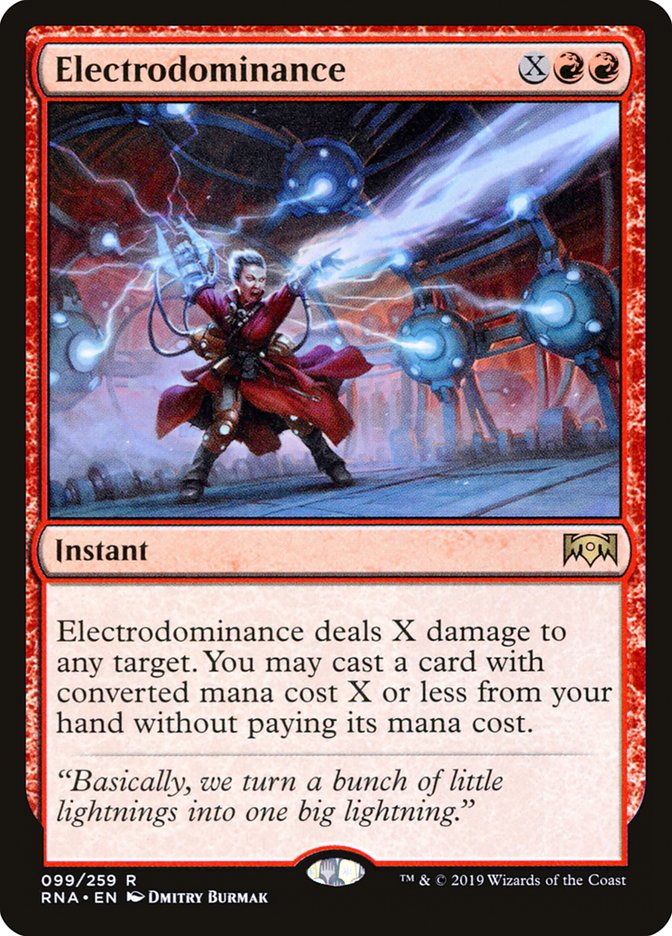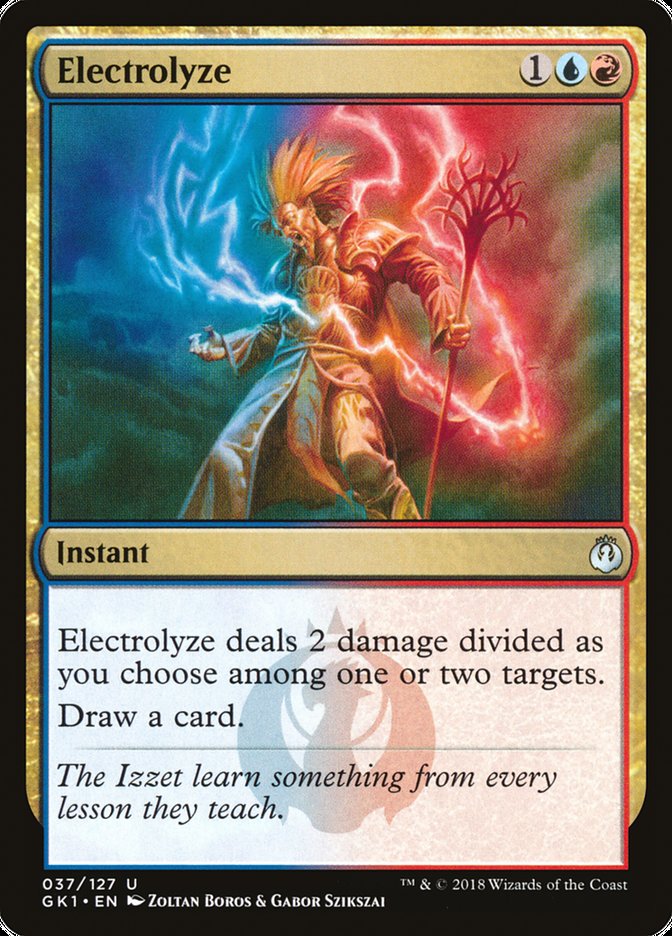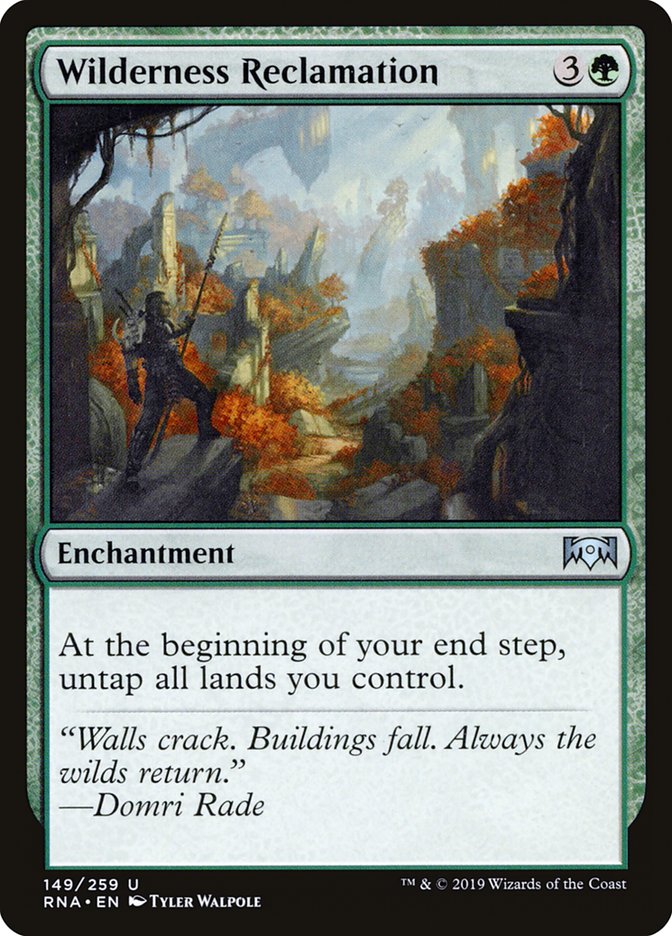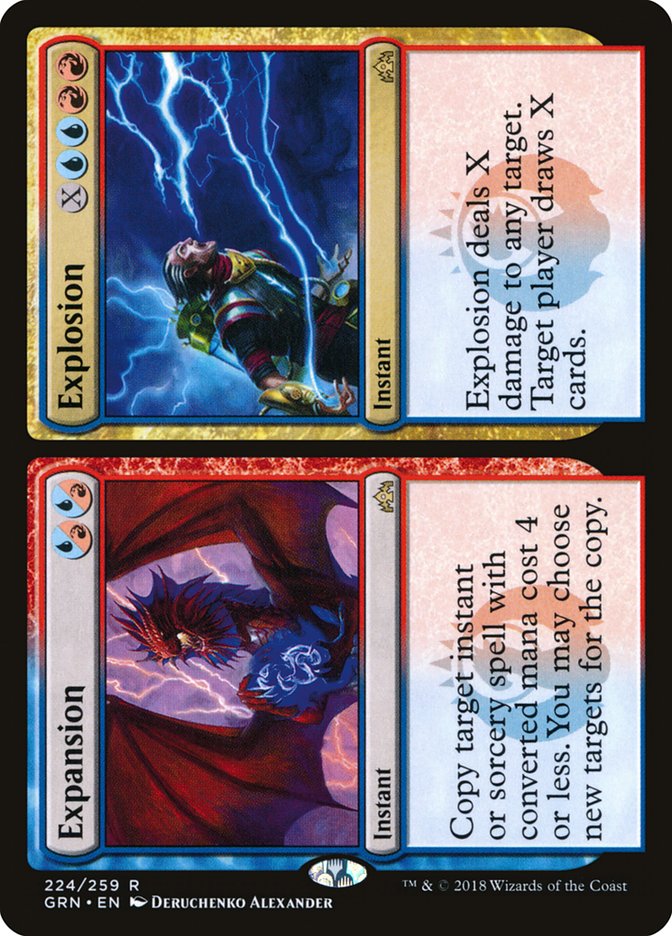Welcome to another edition of
Fact or Fiction!
Today, Todd Anderson, Tom Ross, and Patrick Sullivan are here to
render their verdicts on five statements about
Ravnica Allegiance preview season. Don’t forget to vote for the winner at the end!
1. Of the ten split cards in Ravnica Allegiance,
Warrant // Warden is the most powerful and will see the most Standard
play.
Todd Anderson: Fact.
Of all the split cards, and of all the greatest split cards ever made,
Warrant is the closest to something I’d be happy to pay for without a
second half. Azorius Charm is the obvious comparison here, as both put an
attacking or blocking creature on top of your opponent’s library while
having an alternate mode that was also ideal. Any card that doesn’t
sacrifice efficiency for the sake of flexibility is going to be naturally
wanted in a Constructed deck.
On top of Warrant being a solid rate for the effect, it’s also an effect
we’ve sorely missed for the last few months. Do you realize how
embarrassing it is to play Seal Away in the same deck as Search for
Azcanta? And I don’t even want to get started on Crackling Drake. How about
when Assassin’s Trophy is running rampant? Control decks now have an
instant that can deal with Adanto Vanguard, and I’m more than happy
slotting it into virtually any shell where I previously had Seal Away.
Now, onto the second half of this card: Warden. Serra Angel is no longer a
Standard playable card. It hasn’t been for a very long time. However, a
split card featuring a removal spell that can instead be turned into a
threat is fantastic when you’re playing a control mirror, or your opponent
has a Planeswalker that needs to be pressured, or you just need to get them
dead. I can’t tell you how awkward it is to be sitting on a hand full of
cards like Lava Coil when my opponent doesn’t have a creature in their
deck.
Warrant//Warden is the best split card in the set. In my opinion, it’s one
of the twenty best cards in the set. Warrant by itself would be one of the
twenty best cards in the set.
Tom Ross: Fact.
This is quite the called shot. While I usually take the field on bets
like these, I think this hot take is spot on.
If memory serves, Azorius Charm was the most popular of the cycle during
its stint in Standard, with Boros Charm and Selesnya Charm coming in second
and third. The best mode on Azorius Charm was to put an attacker or blocker
on the top of its owner’s library. The second-best mode was to draw a card
because it did literally anything in a non-creature matchup.
Warden creating a 4/4 flying, vigilance Sphinx fills the description of literally anything.
Jeskai decks were already playing Seal Away to serve a similar role.
Instant-speed creature interaction is tough to come by for Azorius, which
is what separates it from the other split cards from the other guilds.
Rakdos is killing more things with their split cards. Gruul is doing Gruul
things as well and suffers from wanting a density of creatures to go along
with Rhythm of the Wilds and Domri, Chaos Bringer. Orzhov and Simic also
want to be creature dense with a token or Merfolk angle, respectively.
Instants strengthen each other in multiples. It’s hard to play around a
Syncopate, Chemister’s Insight, Settle the Wreckage, and now Warrant and
Angel of Grace all at once. Warrant asks a lot of the opponent to play
around all possible instants that the Azorius player can have. If the
Azorius decks don’t immediately start with four Warrant // Warden, I expect
them to adopt four copies in short order.
I wouldn’t be surprised to see Warrant // Warden to pop up in Standard
Mono-Blue Aggro off just four Hallowed Fountain. The card is quite strong
and versatile.
Patrick Sullivan: Fiction. This is no judgment against Warrant//Warden; the card is priced to move
and it wouldn’t surprise me if this ended up being a format staple. The
“problem,” if you want to call it that, is that there’s so much power in
this cycle of cards that it’s rough to bet on one in particular to rise to
the top. Warrant//Warden does some versatile heavy lifting in games that
are about creatures and removal, but if Azorius mirrors with few-to-no
creatures are a fixture of the format (or if Azorius ends up being not that
good generally), Warrant//Warren could be a fringe sideboard card or maybe
nowhere to be found.
I would argue that every single one of these designs except for the Rakdos
ones are plausible Standard cards (maybe one would play Bedeck//Bedazzle
just for the front half, but I’d bet against), with Incubation//Incongruity
and Trash//Threat in particular having rates that are at least close to
Warrant//Warden. With so much juice in this mixture of cards, and with any
of their representation predicated on the strength of their guild, I
wouldn’t be confident picking any of these as the best of the bunch.
2. Skewer the Critics is powerful enough to slot in as a
four-of in Modern Burn.
Todd Anderson: Fact.
I think this is an easy one for Modern Burn. Dealing damage to your
opponent to turn on spectacle is pretty easy. In a lot of matchups, it will
act as another Lava Spike, which people have already shown they’re down for
by splashing black for Bump in the Night. And I think there’s much to be
said for a card that adds to the redundancy that is desired for a deck like
burn.
Is it flashy? Not exactly but burn spells don’t need to be flashy to make
the cut. Some people still play Shard Volley for crying outloud! While the
“new” version of Burn won’t look much like the current iteration – Grim
Lavamancer has to go – I do expect a more burn-heavy version featuring Bump
in the Night and Skewer the Critics to pop up in a hurry.
Tom Ross: Red Hot Fact.
Burn players have been looking for another one-mana three damage burn
spell for a long time. They’ve even gone so far as to splash black for Bump
in the Night. I’ve even seen Gonti’s Machinations running around in some
Rakdos Burn lists. There has never been a shortage of two-mana-deal-threes
like Incinerate, but those aren’t what the Burn players are in the market
for these days.
They’re desperate out here.
Skullcrack, Grim Lavamancer, Searing Blaze, and Shard Volley have varied on
numbers over the past few years in traditional Boros Burn. I fully expect
Skewer the Critics to be a four-of that replaces some of the cards that
have been teetering on the fence for a while. Sideboarding the Skullcracks
and some number of Searing Blazes for four Skewer the Critics is where I’d
start.
Better yet, I’d just play whatever list Patrick Sullivan lands on.
Patrick Sullivan: Fact
. Modern Burn is always starving for credible one mana plays, to the extent
that Shard Volley, a card that’s hard to describe as either “credible” or
“one mana,” occasionally gets some run. Even with the deck playing nothing
but cheap cards, I more frequently lose games with stuff I didn’t have time
to cast still in my hand, rather than running out of things to do. And it
isn’t exactly like Burn should be struggling to enable spectacle very
often.
I’m more interested in the question of “what to cut?” I’ve seen Rift Bolt
frequently cited (probably because the cards read so similarly), but I’m
not looking to cut one mana plays, and those two cards play well alongside
each other, anyway. The two-mana slot is where the deck is jammed up, so
I’d look at removing Skullcrack or Lightning Helix (or a blend of the two)
depending on metagame considerations.
3. Pteramander will fit in seamlessly into both Modern and
Legacy spell-based aggressive strategies.
Todd Anderson: Fiction (kinda).
First of all, the only reason Gurmag Angler sees as much play as it does
is because of how well it combines with Thought Scour. Delve doesn’t care
about how many instants and sorceries are in your graveyard. The
cost-reduction ability on Pteramander is not delve. It isn’t even close.
With that said, Pteramander might find a home and it won’t take much work.
I just don’t think there exists a deck that can slot Pteramander without
any waves. The perfect home is like the Izzet Phoenix deck that Ross
Merriam and a few others have done well with lately. It seems no one can
really agree on the final threat. Some prefer Pyromancer Ascension to win
longer games. Others want Monastery Swiftspear to provide early pressure
against combo decks. And while Pyromancer Ascension has been the go-to for
the last few weeks, Ross Merriam (and myself) are not convinced it deserves
the slot. Pteramander could be that last threat the deck so desperately
wants.
If it ends up in Izzet Phoenix, I think the biggest hurdle will be making
it work alongside Thing in the Ice. The two creatures lack synergy, but
Pteramander is cheap enough that casting it again and using adapt shouldn’t
be a big problem. My gut instinct has always been that Crackling Drake
isn’t good enough, but people keep casting it and no one but me ever
complains, so I’m more than willing to be wrong here. And if we cut the two
Crackling Drake and two random threats that no one can agree on for
Pteramander, changing the spell suite to accommodate this new threat
shouldn’t take much effort.
Tom Ross: Fiction (at first).
Pteramander will find a home, but it’ll take some work.
It’s competing with a lot: Arclight Phoenix, Thing in the Ice, and
Crackling Drake from Ross Merriam’s Izzet Phoenix deck, and Delver of
Secrets, Bedlam Reveler, Monastery Swiftspear, and Young Pyromancer all
like spells as well. The question is – Is Pteramander better than any of
those? The answer isn’t a clear “yes” which is why it’ll take a few
deckbuilding iterations to identify how and where to apply Pteramander for
Modern and Legacy.
Pteramander isn’t as safe of a 5/5 as Gurmag Angler. It’s two blue mana
total, still dies to Fatal Push, and the adaptation can be responded to
with something like a Lightning Bolt. I expect Pteramander’s juice to not
be worth the squeeze and for it to fall to the wayside with other
“undercosted huge flyers” like Jace’s Phantasm.
Patrick Sullivan: Fiction.
I think this is a non-starter in Modern. Not only are the spells worse
than they are in Legacy in absolute terms, there’s no Daze or Wasteland. I
do not think it’s appreciated how much worse Delver of Secrets is when
people can reliably resolve spells that cost two or three mana, and for as
fast as Modern is, people generally get to make their land drops and then
do stuff. Delver of Secrets is faster and more reliable and sees roughly
zero play, and I doubt the issue with Delver is that there isn’t “Delver
5-8.”
Legacy is the more interesting case, but I’d still bet against. It plays
better alongside Tarmogoyf than Gurmag Angler does and that’s a major plus,
but delve works with Polluted Delta, and Pteramander doesn’t. If you want
play and adapt in the same turn that’s seven spells along with two blue
mana, not a trivial cost. In that case I think Tombstalker is a closer
analog, not Delver of Secrets, and Tombstalker has fallen by the wayside as
the format has gotten more powerful. And first turn Pteramander isn’t in
the same galaxy as Delver in terms of leveraging draws built around Daze,
Wasteland, Stifle, and the rest of the usual suspects. Yes, it’s blue, it
costs one, and it ostensibly plays well alongside some of the format’s best
cards, but I don’t think there’s quite enough rate here to get it over the
line.
4. Electrodominance was pushed way too far and will be
eventually be banned in Modern.
Todd Anderson: Fiction.
I don’t think Electrodominance is a very good Magic card. I know it has
been getting a lot of hype lately and people keep asking me about putting
it into my decks, but people did the same thing with Mission Briefing.
Whenever we get a new toy that does a sort-of unique thing, people start
parroting the same talking points.
What about Electrodominance with Ancestral Vision? What about an additional
way to cast Living End for cheap? Why don’t you play Electrodominance in
all your goofy spell-based decks?
Let me be clear: Electrodominance will be at its best in a fringe Modern
deck like As Foretold. That deck will never be on top of the Modern
metagame. And not ever will it be strong enough to consider banning.
For starters, the front half of the card does almost nothing. For three
mana, you get to deal one damage to a target. And if you’re going full
combo mode, playing Electrodominance to cast Living End or something
similar for free, I think you’d be better off just building your deck
around the cascade mechanic. It’s more consistent and gives you more ways
to actually combo off. With Electrodominance, you’ll need both parts of the
combo in hand, where the ascade cards function like a one-card combo.
Tom Ross: Fiction.
I don’t think Electrodominace will be banned. I don’t even think it’ll
see play.
It can’t go in Living End or anything else that’s trying to cascade into
zero-mana spells. The converted mana cost of two is really holding
Electrodominance from slotting into a cohesive deck. As Foretold has shown
up in a few copies of those types of decks to power out Ancestral Vision,
Living End, or Restore Balance. You have to cut the cascade spells, which
are guaranteed to hit your zero-mana spells. That’s not a trade-off I’m
willing to make.
Wouldn’t you rather do this?
What about Electrodominance into Ancestral Vision in a “fair” manner? Deal
two damage and draw three for four mana and two cards? Two mana and two
cards for three cards? Is that even much better than Electrolyze? This
doesn’t sound like “getting paid” for doing “the thing” to me. Slowing down
an already slow deck with more durdle isn’t my cup of tea.
Double red is also quite a strain if decks are trying to slot
Electrodominance into a traditional control shell. Ideally, you like to
cast Logic Knot and Cryptic Command in a timely fashion. Splashing for Path
or Exile and Fatal Push is common from Izzet decks. I expect anyone trying
to mize with Electrodominance will get run over by the aggro decks in
Modern, or simply not draw the pieces to their combo in tandem.
Patrick Sullivan: Fiction.
First, I am suspicious at the notion that this was intentionally pushed.
More likely, Play Design focuses the vast majority of their time balancing
Standard and Limited, with the occasional nod to Modern and beyond with
cards like Fatal Push. It’s pretty wild to intentionally give some love to
Turn 1 Wheel of Fortune decks on purpose, so I’d assume it was either
unknown, or briefly acknowledged with the understanding that it could be
banned in the chance it could be problematic.
Getting to the root of the question, I’m not as bullish on Electrodominance
as many of my peers. This take may end up aging very poorly. But Modern
isn’t short of explosive decks that must play a bunch of rancid enablers
and collapse against a single targeted card. Most of the builds I’ve seen
floating around have way more architecture devoted to enabling
Electrodominance than, say, classic Living End decks, As Foretold, All-In
Red, and the like, and that’s not exactly the cream of the Modern crop.
Certainly, danger is there, and in some worlds Electrodominance gets banned
by the next set release, but the history and present of Modern suggests the
format is pretty robust against this sort of thing.
5. Wilderness Reclamation is a head-scratching design that
immediately makes Bant Nexus the deck to beat in Ravnica Allegiance Standard.
Todd Anderson: Fiction (kinda)
. I do think Wilderness Reclamation is going to catapult me into the
elimination rounds at #SCGINDY, but I don’t even know if Nexus of Fate is
the third best card to pair with Wilderness Reclamation. Allow me to
explain.
Cards like Nexus of Fate require a different type of engine in order to be
good. Drawing cards and pushing towards closing the game out with a
Planeswalker is exactly the type of engine you want to pair with Nexus of
Fate. Teferi, Hero of Dominaria is especially gross with Nexus of Fate
because it also gives you a little more mana to work with when casting
Nexus of Fate. But let’s be clear: if you aren’t drawing cards while
casting Nexus of Fate, you’re not actually gaining any ground. And even
though Wilderness Reclamation can make for some disgusting turns, those
turns get a lot worse when you’re spending seven mana every turn or so.
Explosion is the card I think works best with Wilderness Reclamation and
will ultimately bring me victory next weekend. The Explosion half is the
kill condition, but it’s also just a fine removal spell plus draw six cards
after you resolve an early Wilderness Reclamation.
In the end, Wilderness Reclamation is effectively just a giant battery, and
we must find a way to expend all that extra energy. We are incentivized to
play instants (oh no) because we get that burst of mana during the end
step, but there are a multitude of ways to abuse all that extra mana. And
while Nexus of Fate is a fine spell to pair, I don’t think it actually ends
up giving the Bant Nexus style deck anything it didn’t really have before.
Once you start casting Nexus of Fate, a bit of extra mana isn’t going to be
beneficial for more than one or two turns. What you need, more than
anything, is a way to generate extra cards or close out the game, and
Explosion does both.
Tom Ross: Fiction.
Bant Nexus is the deck to brew, not the deck to beat.
Wilderness Reclamation is good. It makes Bant Nexus more explosive and
allows it to “go off” a turn faster. It has people’s wheels turning to brew
out an optimal list. It’ll probably be great in Best of One on Magic Arena.
What I don’t expect Bant Nexus to do is succeed in real life competition
when players have access to sideboards.
I expect the successful Standard decks from Guilds of Ravnica to
continue doing well. I expect the Ravnica Allegiance guilds
combinations to produce competitive archetypes for people to explore. I
don’t expect Nexus of Fate, Wilderness Reclamation, Teferi, Hero of
Dominaria, and a pile of Fogs to run rampant in Standard anytime soon.
What I am more interested in is the Temur Reclamation deck that Todd
Anderson has been working on. Expansion // Explosion is what I want to be
doing with a pile of mana. Hydroid Krasis is a good one too. I think the
scaling cards that function reasonably well when you don’t draw Wilderness
Reclamation is where you want to be. Adapt creatures like Growth-Chamber
Guardian, Incubation Druid, and Zegana, Utopian Speaker are examples of
good mana sinks that are decent on their own early on.
Patrick Sullivan: Fact.
I mean, in some respects the heart is in the right place. Doubling up on
your mana is fun and giving all-spell strategies an incentive to put a
permanent on the battlefield is a noble goal.
This one just doesn’t seem even close to being close.
You get a full rebate (or more) the turn you play it and then personal
Heartbeat of Spring for the rest of the game, assuming your deck is mostly
instants. Innocuous cards like Radical Idea and Chemister’s Insight go
through the roof alongside Wilderness Reclamation, to say nothing of bigger
payoffs like Nexus of Fate and Expansion//Expulsion (easy to push these
through early on in the game with counterspell backup). Even if it didn’t
stack with additional copies of itself or worked with floating mana, there
would be a lot going on here and it stacks with itself and works with
floating mana.
Not sure if the best home for it will end up being Nexus of Fate – a fine
bet, but there are a lot of potential fits – but I would bet against
Wilderness Reclamation being legal this time next year.


